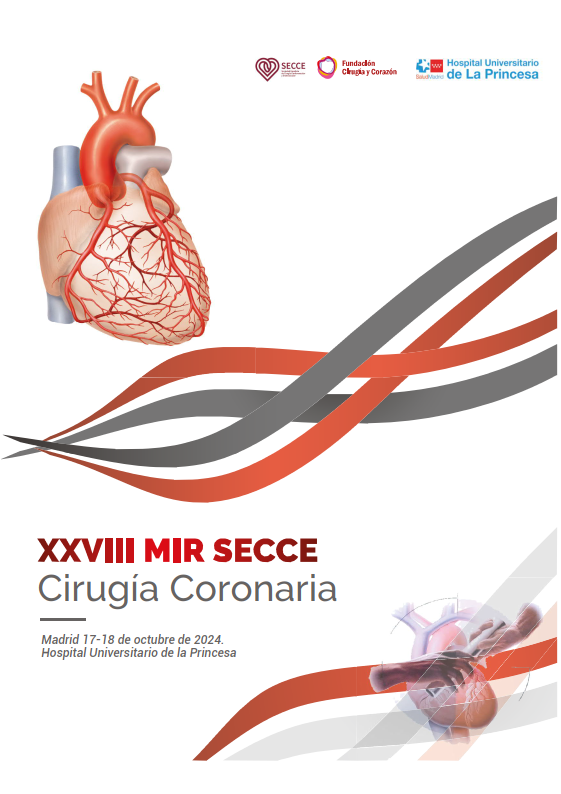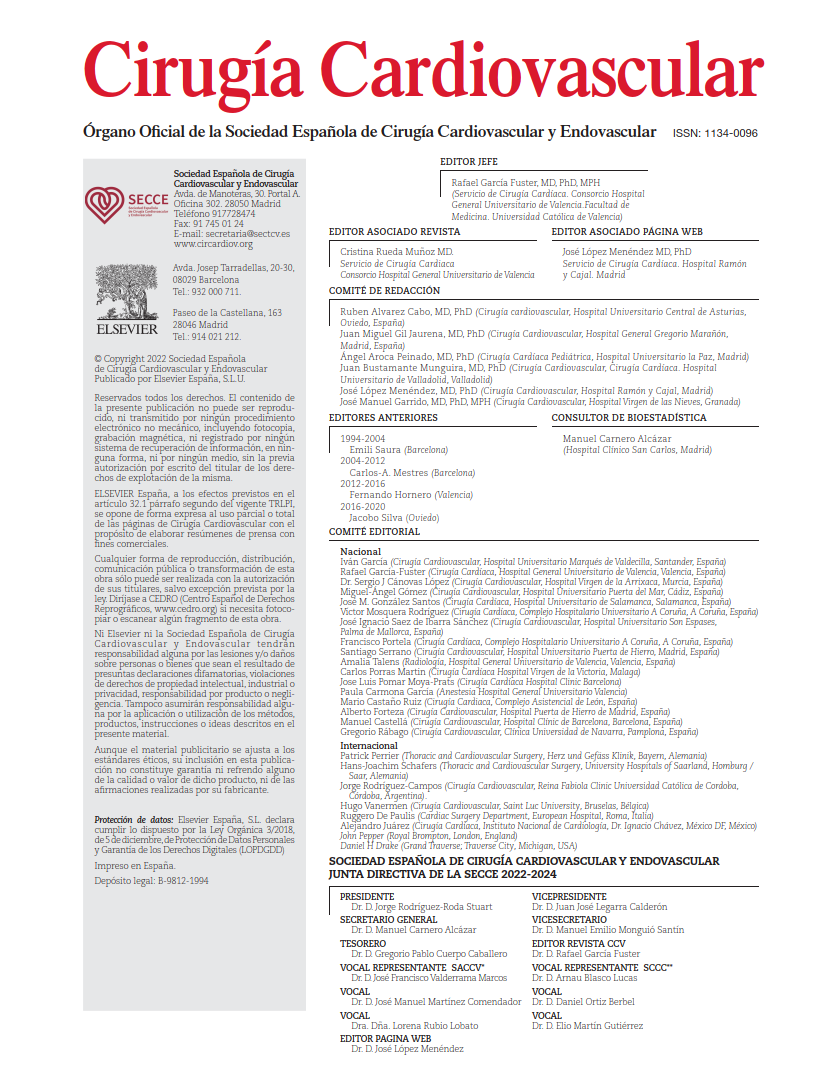Political news, particularly international affairs, dominates the media landscape. The influential Republican administration of Trump, Musk, and company threatens to upend the status quo (which can hardly be called an “order” given its current state of chaos). We are witnessing a clear shift in era, one that some have labeled as “disruption” in contrast to the previously accepted “paradigm.”
The treatment of aortic stenosis is not immune to these disruptive phenomena or paradigm shifts. Transcatheter aortic valve replacement (TAVI) is here to stay—this is indisputable—and it has proven to be an excellent therapeutic tool for a condition that is more prevalent than previously thought. This increased prevalence is largely due to its predominance in older populations, making TAVI a viable therapeutic alternative when the risks of surgical intervention are deemed unacceptable for patients who have already reached or exceeded the general population’s life expectancy.
The evolution of TAVI has been extensively discussed in previous blog entries. However, its expansion into the low-surgical-risk population has triggered a significant paradigm shift in treatment indication, where implantation age has taken precedence over predicted surgical risk. This has led to considerable discrepancies among the scientific societies responsible for clinical practice guidelines. Traditionally more progressive, European societies and their CE Mark have adopted a more conservative stance, maintaining the age cutoff at 75 years. In contrast, historically more conservative American societies and their FDA have embraced a market-driven liberal approach, promoting TAVI as a valid alternative for all patients requiring a bioprosthetic valve, including those over 65 years of age. It seems our clinical practice simply reflects the society in which we live. In fact, despite the clear recommendations of American guidelines and the highly regulated nature of the U.S. healthcare system, a recent 2021 report revealed that nearly 50% of TAVI implants were performed in patients younger than 65 years.
Given this context, the study under analysis is particularly relevant. It evaluates comparative outcomes in young patients (under 65 years old) with aortic valve disease treated with either TAVI or surgical bioprosthetic implantation. This study is crucial in addressing an underexplored age subgroup—after all, in the PARTNER 3 trial, only 6.99% of the surgical arm and 7.9% of the TAVI arm consisted of patients younger than 65. Due to the unique characteristics of U.S. clinical practice, this study included over 9,500 patients drawn from the health department databases of California, New Jersey, and New York between 2013 and 2021. The analysis assessed 30-day and 6-year outcomes, employing a propensity score-matching approach to balance both treatment arms, ultimately yielding 1,994 patients per group.
The study revealed clear temporal trends: over the 8-year period, the proportion of patients younger than 65 undergoing TAVI increased from 7.1% to 54.7%. As expected in a younger population, preoperative comorbidities were low. Interestingly, the prevalence of bicuspid aortic valves in this age group was strikingly low—only 14.8% in the surgical group and 5% in the TAVI group before propensity adjustment. Consequently, 30-day post-procedural mortality was comparable between both groups (1% vs. 1.5%; p = .33). Regarding post-procedural morbidity, stroke and readmission/reintervention rates were similar. However, the need for permanent pacemaker implantation was alarmingly high in the surgical group at 15.2%, though still lower than in the TAVI group, where more than one in five patients required a pacemaker (21.1%). The study did not specify the types of prostheses implanted in each group, though the unexpectedly high pacemaker rate in the surgical arm suggests the possible use of sutureless prostheses.
At 6-year follow-up, TAVI was associated with a significantly higher mortality rate, more than doubling that of the surgical arm (23.3% vs. 10.5%; HR = 2.27; p < .0001). No significant differences were observed between groups in terms of late stroke incidence, heart failure-related readmission, or reoperation rates. However, cause of death (analyzed as all-cause mortality) and prosthesis hemodynamic performance were not reported.
In conclusion, the authors highlight that, despite clinical guideline recommendations, TAVI utilization has increased among patients younger than 65 years. In this population, TAVI is associated with a mortality rate twice as high as the surgically treated cohort at 6 years, alongside a notably high need for permanent pacemaker implantation.
COMMENTARY:
This study serves as a stark exposé of an accepted negligence in the use of a therapeutic option that disregards the recommendations established by clinical practice guidelines and the scientific societies that support them. As is often the case when such deviations occur, the primary victim is the patient. In healthcare systems like ours, this misuse likely also results in a societal burden by generating unnecessary expenses. However, within the American system, this issue holds less significance, as the primary beneficiaries are the implanting physicians and the industry backing them.
It goes without saying that this trend is not unique to TAVI. Similar observations have been made for other devices, such as the MitraClip®, where concerns have been raised—most notably by Chitwe et al.—about the expansion of these therapies into “new” indications (such as primary mitral regurgitation), which have traditionally been within the domain of surgical management.
The industry’s “Uncle Sam” and his unmistakable I want you gesture continue to point at new operators, enticing them with the promise of “reimbursement”—a concept that remains foreign to our healthcare landscape. This “reimbursement” system affects both interventional cardiologists and surgeons, drawing them into a scenario where treatment indications become increasingly lax. What was once a Heart Team now risks becoming a Cosa Nostra, where financial incentives smooth over disagreements and foster complicity.
One limitation acknowledged in the study is the lack of clarity regarding who assessed each patient’s case and determined their assigned treatment strategy. However, given the dynamics described above, this omission may be of little consequence.
Although the study’s findings are already striking, validating them through a prospective, randomized methodology would be beneficial. Not because the current study lacks rigor, but rather to preempt potential skeptics who might attempt to justify these off-guideline indications. The data originate from major health registries, reflecting real-world clinical practice. While propensity score matching is not the optimal method for balancing treatment arms, it remains a reasonable approach given the young and relatively homogeneous study population, which exhibited low morbidity rates. It seems unreasonable to assume that the TAVI cohort was selected based on a greater burden of comorbidities, as these patients were classified as low-risk—although, as recent trends suggest, risk stratification appears to be losing relevance in treatment decisions.
Ultimately, the trajectory of aortic stenosis treatment seems to mirror the political direction of the country from which this study originates—the United States. For centuries, this nation transformed a barren land into one of the world’s most prosperous societies, serving as the paradigm of freedom and democracy. Today, however, the forces of money, fake news, and vested interests evoke parallels with the pressures of industry, fake science, and the reimbursement system, all of which have led to the current situation.
It is well known that, from a market perspective, the expansion of TAVI has reached a saturation point, necessitating the search for “new indications.” Studies like this play a crucial role in exposing what can only be described as medical negligence and advocating for a return to common sense. If even proper medical practice can be commodified, then our profession risks losing all meaning.
REFERENCE:
Alabbadi S, Bowdish ME, Sallam A, Tam DY, Hassan I, Kumaresan A, et al. Transcatheter versus Surgical Aortic Valve Replacement in Patients Younger than 65 Years in the US. J Thorac Cardiovasc Surg. 2025 Jan 9:S0022-5223(25)00002-9. doi: 10.1016/j.jtcvs.2024.12.025.



